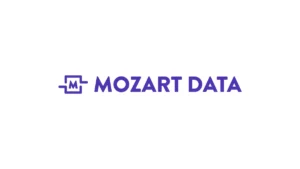The efficient movement and transformation of data in a data-driven world is vital to business innovation and growth. Unfortunately, transferring data into a data warehouse can be an extremely tedious process. Enter ELT tools: ELT helps to streamline the process of modern data warehousing and managing a business’ data. When you pick the right tool and use it the right way, it lets businesses turn their focus back to mining the data for actionable insights instead of stressing about how to manage it all.

In this post, we’ll discuss some of the best ELT tools to help you clean and transfer important data to your data warehouse.
TL;DR What’s a Data Warehouse?
If you didn’t read our last post on data warehouses, here’s the 30,000 foot view. A data warehouse, also known as an EDW, is a repository to store the data your business collects. It also makes it easy to combine, clean, and compare data from various sources into a central place where your data analysts can work to draw conclusions from it to help your business. Think of it as a specialized library just to store the history of your business that your researchers get to study.
A data warehouse system allows a business to run powerful analytics on large volumes of historical data in ways that are impossible with an old fashioned database. Let’s face it: between ecommerce, email marketing, advertising, etc, it’s more important than ever to combine these data sources to draw actionable intelligence from them.
If you’d like more information, I’d suggest reading our recent post What’s a Data Warehouse Anyways?
With that said…
What is ELT?
ELT is an abbreviation for “Extract, Load, and Transform” – essentially, one of the main ways to transfer data from your various tools to a data warehouse.
It refers to the gathering and organizing of data to prepare it for analysis. This analysis offers valuable insights necessary for the growth of your organization. In a nutshell, you extract data from multiple sources, then transform this data by cleansing and aggregating the data in a central place. Finally, you load this data into a convenient location where it’s easily accessible to the sales, marketing, and executive teams to make informed decisions about the direction of the business.
Why Do You Need An ELT Tool?
Every modern business uses a bunch of different software apps to run their operations, but that also means that the data you need to understand your results is spread out across a lot of different databases.
This can make it really hard to understand your numbers, unless you’re spending a bunch of money on data analysts and engineers. Using the traditional manual methods of gathering and scoring data, they’re time-consuming and expensive. ELT helps you to combine and aggregate the data at a reasonable price to empower your data analysts to do their best work and save you money.
What Are Some of the Best ELT Tools?
When choosing the most appropriate ELT tool for your business, you need to ask yourself a few questions, including the following:
-
Do I really need real-time data?
-
Does my data come from multiple sources requiring joining and aggregating?
-
Do I require data held in cloud SaaS platforms?
Below is an in-depth list of ELT tools that can help with your data warehousing needs.
Mozart Data
Mozart Data provides the easiest ways to extract data from over 140 different sources, including Google Analytics, CRMs, and social media platforms. Once the data is moved to a data warehouse, users have unparalleled abilities to clean and organize data for better analysis.
Mozart Data is designed to help data engineers and analysts focus on the aspects of their roles that truly require their expertise. With just a bit of SQL, teams can avoid tedious, time-consuming manual processes and other challenges that plague teams with less powerful tools. With powerful automation and scheduling abilities, as well as fast queries, teams can rapidly access and transform the data they need, so more time is spent on insight and analysis. Mozart Data can also be linked to all popular business intelligence tools, making the process of utilizing cleaned data seamless.
Mozart Data also offers extensive customer support, including actual data analyst support to facilitate setting up advanced reporting more efficiently.
Xplenty
This cloud-based ELT tool provides simple visualized data pipelines to help you manage automated data flows across various sources and destinations. Xplenty’s powerful on-premise transformation tools enable clients to clean, customize, and transform their data while complying with best practices.
Its key features include the ability to:
-
Transfer and transform data between data warehouses or internal databases.
-
Centralize and prepare data for business intelligence.
Talend
This cloud integration tool offers data and cloud integration options to connect, extract, and transform data across on-platforms and the cloud. This enables companies to harness the power of their enterprise data and helps make it more accessible for management to find helpful ideas in the data.
Talend offers businesses a data integration platform and a cloud-centric dashboard for enterprises.
Its features include:
-
The ability to log collection and display it as you go
-
You can load data into your data warehouses and lakes without formatting, making the ingestion speed much faster
-
Monitoring and management capabilities
-
A subscription-based data management platform
-
Easy deployment in a cloud environment
-
A supportive online community ready to help with any technical difficulties
Matillion
Matillion recently launched their ELT to function in addition to and alongside their data loader applications. Matillion/s real advantage is that it provides several data connectors that allow non-technical users to pull data from different data stores, combine, cleanse, and push data without becoming a fully-fledged database administrator.
It began as an engine to push data to Snowflake and Redshift but has grown to incorporate more endpoints in Big Query, Azure, and Databricks Delta Lakes. Matillion is a cloud-based solution that runs in a cloud environment. You can deploy it on Azure, GCP, and AWS.
Matillion’s a cloud-based service that you can scale depending on your needs, which is helpful if you’re still in an early phase of your growth. Matillion can pull data from on-premise and cloud data sources, but it might take some cloud engineering and technical expertise to get the best out of it.
Hevo
Hevo is a no-code data pipeline that ingests data in real-time from any source and transfers it to any destination without needing to write a single line of code. This ELT tool can extract, load, and transform data from file storage, SDKs, Databases, SaaS Applications into a Data Warehouse like BigQuery, Amazon Redshift, and Snowflake.
Hevo’s best features include:
-
The ability to transform and design aggregates, as well as join with the data warehouse for quicker query processing
-
Customer support using email and Slack
-
Alerts, monitoring, timely alerts, and version control
-
Automatic schema detection and mapping
-
Consistent data migration with zero data loss (at any scale)
-
Intuitive user interfaceI that allows you to load data from any source to any data warehouse
-
No ELT script maintenance required.
Skyvia
Skyvia is a cloud data platform for no-code data integration, backup, and access. Skyvia includes an ELT solution for different data integration scenarios with support for cloud applications (Hubspot, Salesforce, Dynamics CRM, among others), cloud data warehouses (Google BigQuery, Amazon Redshift), and databases (MySQL, PostgreSQL, Oracle, SQL server), and CSV files. Skyvia also includes an online SQL client, cloud data backup tool, and Odata server-as-a-server solution.
Skyvia features include:
-
A commercial subscription-based cloud solution with free plans available
-
Predefined templates for common integration cases
-
Bi-directional synchronization
-
The ability to import data without duplicates
-
The ability to preserve source data relations in target
-
Integration automation by schedule
-
Advanced mapping settings with constants robust expressions for data transformation
-
Wizard-based no-code integrations that require less technical expertise than other tools
Airflow
Airflow is technically used to create jobs, schedule these jobs, and monitor your ELT workflows. An Airflow workflow is a sequence of tasks defined using Python. The tasks can be initiated on a schedule or by an event.
Airflow features include:
-
The power to expand its abilities through plugins
-
A logging feature with a detailed view of past and present runs
-
The ability to execute, schedule, and distribute tasks across worker nodes
Airflow is used by hundreds of major companies to help manage their data including Stripe, Intel, AirBnB, PayPal, and Yahoo.
Should You Use Paid or Free ELT Tools?
Like all software development fields, ELT has witnessed a surge of open-source projects that are free to download and developed by a group under an open license. These are a cost-effective alternative to commercial solutions. Free ELT tools are a great fit for smaller projects that lack the funding to purchase a dedicated tool or lack the resources and time to build a custom ELT solution in-house.
A modern data stack is ideal if you have high ambitions for your data analytics. Many paid ELT tools are great, especially if you want to reduce the TCOs of equipment and maintenance costs. Mainstream ELT tools offer real-time streaming, intelligent schema detection, monitoring and alerts, and many more unique features.
When You Might Need An ELT Tool
The biggest benefit of shelling out for a top-end ELT tool is simplifying your data management. It separates the loading and transformation tasks without a lot of extra effort, reducing the interdependence of these processes, reducing risk and streamlining project management.
It can also dramatically lower the costs of your data management and data analysis. While you probably still need a data expert to get the most benefit out of the data your business collects, ELT tools can dramatically lower the costs you have for storage, expertise, and analysis. At the same time, you make life a lot easier on your data team by giving them the best tools and streamlining their efforts.
Data analysis, and data warehousing as a precursor, play a critical role in business intelligence. Raw data must be moved and prepared for analysis to give it the most impact when it’s needed. A great ELT tool is an integral technical pillar in this data integration process. They provide a different approach to data movement than the normal old-fashioned processes, but a better way to do business. Like most business software, choosing between free or paid ELT tools will depend on how much help you and your business need, and what it can afford. With that said, ELT tools are a breakthrough in how online businesses manage their data and make it easier than ever to identify surprising opportunities to grow or optimize your business.

